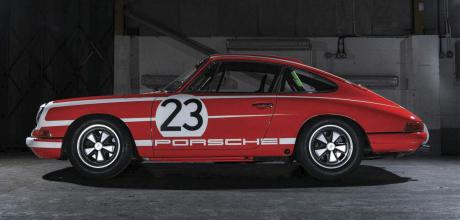Restored 1966 Porsche 911 2.0 SWB
The coming together of technicians from Porsche Cars GB’s network of Classic Partner Centres saw this early 911 wow fans of historic motorsport before the car underwent further transformation in readiness for a return to racing.
Words Dan Furr
Photography Chris Wallbank
REGENERATION GAME
Porsche Cars GB’s restored 911 2.0 SWB
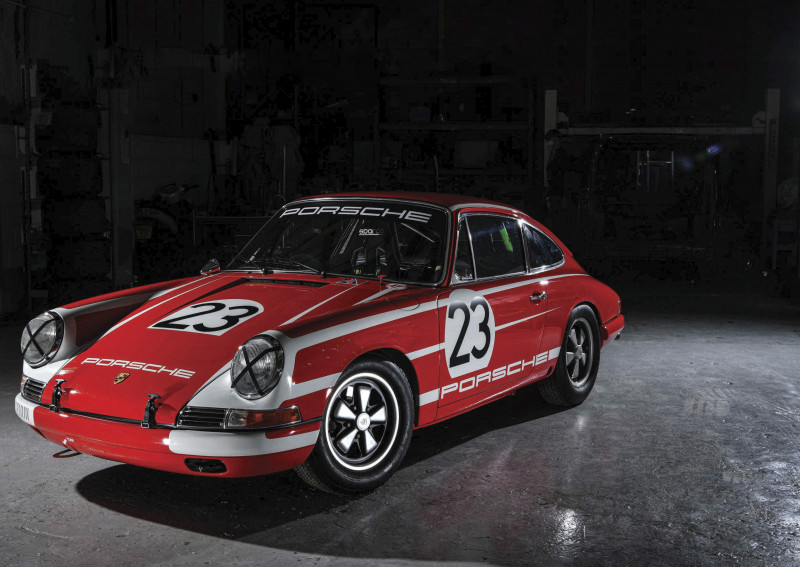
Back in 2018, Porsche was flooding social media with pictures and stories celebrating the seventieth anniversary of its time as a sportscar manufacturer. To mark this milestone in the company’s history, Porsche Cars GB commissioned the restoration of no fewer than twenty legacy models, including a 914, a G-series 911, a 964 and a 993. Each car was finished in the same Liquid Metal paint covering the 918 Spyder PHEV, while mechanical and interior restoration the latter incorporating a commemorative plaque preceded the appearance of the finished four-wheelers at the annual Lancaster Insurance Classic Motor Show, held at the National Exhibition Centre in Birmingham every November.

Through its Porsche Classic Partner Centres, Porsche Cars GB has restored a number of historically significant Stuttgart-crested cars. For example, at the back end of 2015, in a bid to highlight the existence of the rich pool of talented Porsche Centre technicians well-versed in the field of maintaining Zuffenhausen’s classic speed machines, Porsche Cars GB Owner Services Manager, Jonathan Mannell, arranged for 924 GTP chassis 002 a participant in the 1980 24 Hours of Le Mans and the only factory race car ever to compete wearing the Union Jack to be liberated from the Porsche Museum and passed through each of the UK’s Classic Partner Centres for restoration. Under the direction of Andy Wexham (previously a Porsche Classic Technician, now head of independent specialist, RSR Developments), the team at Porsche Centre Leeds took care of stripping and inspecting the car, as well as sorting its electrics, in readiness for its new lease of life. Porsche Centre Glasgow recommissioned the suspension, brakes and wheels. Meanwhile, Porsche Centre Swindon was tasked with the mammoth job of rebuilding the car’s engine. Last, but by no means least, Simon Coath, Porsche Centre Hatfield’s resident Classic Technician, worked with his colleagues at the Hertfordshire site to refurbish the car’s reinforced five-speed transmission.

FAMILIAR RING
After the build was complete, the car was presented to an excited gathering of motoring hacks at Porsche Experience Centre Silverstone, with one of GTP 002’s original drivers, the late Tony Dron, entertaining the crowd by way of demonstration laps. Soon after, Derek Bell drove the wide-quartered 924 around the Green Hell as part of a Porsche-organised coming together of standout survivors from the manufacturer’s transaxle product range. Indeed, Porsche Cars GB’s restoration of GTP 002 proved so successful, an early 928 was soon being prepared for similar treatment. Driven by former works driver and 1970 24 Hours of Le Mans winner, Richard Attwood, the V8-powered land shark was configured for entry into the Historic Sports Car Club (HSCC)’s 2017 ‘70s Roadsport Championship, a move designed to draw attention to the 928’s fortieth anniversary. This time, the role of each Classic Partner Centre was to serve as trackside support whenever a round of the championship arrived at a local circuit. For many of the technicians involved, it was the first time they’d participated in the preparation of a competition car for practice, qualifying and racing a huge challenge, but another example of how Porsche is keen to bring its Classic Partner Centres ever closer to the manufacturer’s retro rides, both in road and race trim, thereby adding to a knowledge base directly benefiting owners taking their air-cooled or transaxle models to Glasgow, Swindon, Hatfield, Leeds, or newly appointed Classic Partner Centre, Bournemouth, for maintenance, servicing, repair or restoration work.
I WAS BOWLED OVER TO DISCOVER I WAS LOOKING AT THE VERY SAME TWO-LITRE CAR I'D SEEN IN 2018
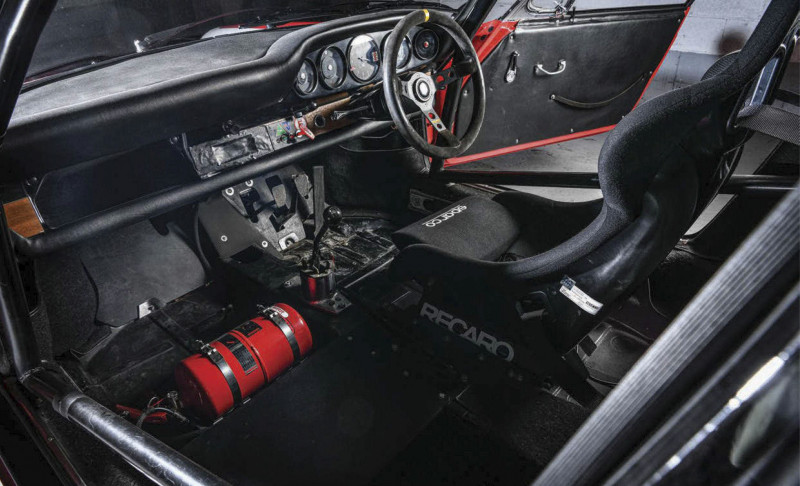
The success of both the 924 and 928 projects relied heavily on the input of father and son Porschephiles, John and Tom Bradshaw, the pair behind Manchester-based race car preparation and premium marque bodywork specialist, Road and Race Restorations, one of only a handful of officially recommended independent Porsche repair shops. The company took care of all GTP 002’s bodywork needs, which was no mean feat due to significant damage inflicted on the car’s front clam, a condition requiring the part to be created afresh with nothing other than period photographs available as a point of reference. Additionally, John prepared the 928 for Attwood’s star turn behind the wheel after personally sourcing the 4.5-litre V8-powered Porsche.
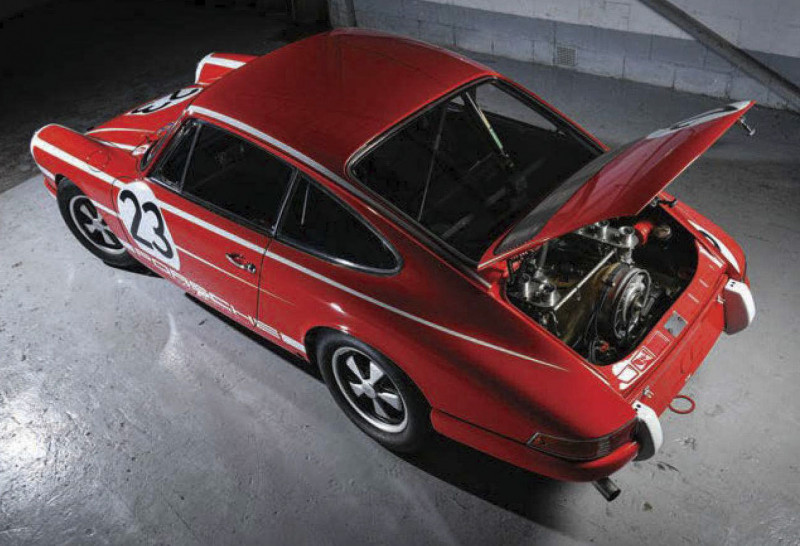
The 928 project worked well as a way of raising awareness about the existence of the Porsche Classic Parts service and the expertise of Classic Partner Centre technicians at Glasgow, Hatfield, Swindon and Leeds, reflects John. What became apparent, however, is that changing personnel between each round of racing meant there wasn’t ever anyone with intimate knowledge of the car on hand come race day. Time spent with a motorsport machine across a season, or at the very least, multiple successive rounds of a championship, gives you detailed knowledge of how the car should be configured for varying weather and driving conditions. With this in mind, when Jonathan Mannell approached me with details of Porsche Cars GB’s next motorsport-themed restoration project, I knew we needed to pull together a permanent support team to look after the car across an entire season of racing.
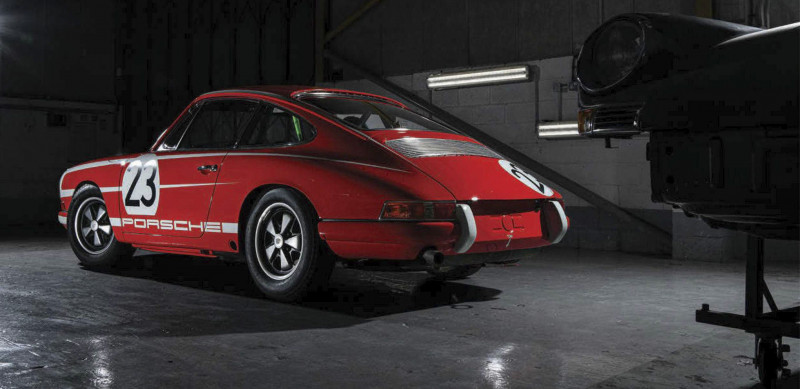
The Porsche being pitched by Jonathan was a short-wheelbase two-litre 911 manufactured in 1965. His request was for Road and Race Restorations to prepare it for an attack of the track in time for Porsche’s seventieth anniversary celebrations. The car had been purchased by Porsche Cars GB many years beforehand, but unrelenting engine problems meant keeping it in good operating condition had been a prohibitively expensive exercise, recalls John. With Porsche’s anniversary on the horizon, not to mention the fact one of the 911’s previous owners had part-prepared the car for circuit use, a decision was made to hand it to Tom and I with an instruction for our team to strip and rebuild the car for a motorsport campaign intended to tie in with the manufacturer’s full year of high-profile PR activities.
GAME FOR TWO
The Peter Auto 2.0L Cup was introduced in 2018 for early short-chassis 911s prepared in accordance with pre-1966 FIA regulations,. John continues. The Le Mans Classic also offered an attractive forum for the car to strut its stuff. As tempting as these outings were, there was a huge amount of work to be done before any of the star drivers drafted in to put the diminutive Porsche through its paces could hop into the hot seat.
We stripped the shell bare and were delighted to find a chassis in excellent condition, a characteristic partly resulting from the car spending much of its life on the sunny side of Italy. Even so, we had to repair the roof, rear quarters and sills where knocks had been picked up over the years. In fairness, these were minor complaints, but they needed to be addressed before a respray.
The poorly engine was stripped and rebuilt in accordance with FIA Appendix K historic race regulations, essentially a rulebook stating competing cars need to be built to authentic original specification to ensure a level playing field. This meant the 911 in John’s custody needed to make use of stock-spec ignition, its original Solex carburettors (a pain to work with compared to the Weber carbs Porsche fitted to later 911s.) and its small-valve head. New barrels, pistons and a new crankshaft were required, but the acquisition and use of replacement items sourced through Porsche Classic’s genuine parts catalogue highlighted how accessible genuine components for Porsche.s legacy models is today, a statement which was largely the point of the project.
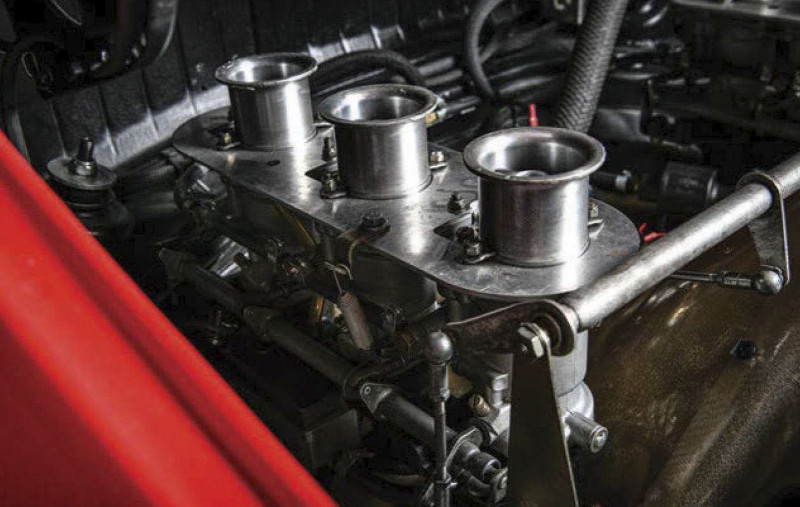
In addition to the engine, the transmission was rebuilt. Appendix K allows the use of any gear sets originally manufactured for the host vehicle. This flexibility afforded John the opportunity to pick from twenty different 901 ratios, enabling gearboxes to be built to varying specification to suit whichever circuit the car happened to be tackling. Finding available ratios was the first challenge, followed by a process of trial and error on the track. Anyone with experience of a 901 gearbox will tell you it’s a tricky unit to operate quickly,. he warns. .Miss a gear, over-rev the engine and you’ll break a rocker valve. Follow this pattern of behaviour too many times and you.ll do serious damage to the bottom end. We were thankful to welcome a variety of experienced drivers when the car hit the track, but while we did our best to improve oil flow, a lack of mechanical sympathy during shifting caused major problems, resulting in necessary removal of the engine after we landed for a round of racing at Spa. Fortunately, drivers and gearboxes didn.t miss a beat after the repaired engine was returned to its natural habitat, enabling hassle-free maintenance every time the car was put to work thereafter.
The interior of the punchy 911 was painted matte black (to eliminate the risk of distracting sun glare), while the tired front seats and belts were replaced with a single Sparco bucket and a Schroth harness. A roll cage was installed, but it was rear seats and carpets which hinted at how close the race car’s specification is to the standard roadgoing short-wheelbase two-litre 911. Even the suspension is more or less what you’d find fitted to the street car, stresses John.
That said, Appendix K allows for alteration to ride height and other suspension settings. While owners of competing cars in the Peter Auto series opted for a thirty millimetre drop, we stuck with fifteen millimetres in a bid to avoid introducing compromised handling.
Brake calipers, suspension bushes, fuel equipment, wiring, dashboard instrumentation and host of other parts were renewed in readiness for the car’s participation in the 2.0L Cup, the HSCC’s Oulton Park Gold Cup, the same organization’s Guards Trophy and the Silverstone Classic. The car also made appearances at Gentlemen Drivers events held across the UK, an important factor in promoting the project as a Porsche Cars GB initiative. Nevertheless, an invitation to compete in the Nürburgring Oldtimer Grand Prix was not to be dismissed. The 911 held its own all season, helped by having Derek Bell, Richard Attwood, Anthony Reid and Tom at the controls, says a suitably proud John, acknowledging Bradshaw the Younger’s experience competing in Carrera Cup GB. Despite observing homologation requirements demanding a minimum weight of 1,002kg, the car took the fight to vehicles weighing as much as a damp bus ticket! It was a fantastic display of performance highlighting how impressive a 911 of any age is when carrying more or less standard trim at a track.
In accordance with his wishes, the nucleus of the team travelling with the car was a fixed group of skilled technicians working across all four Classic Partner Centres continuity was key to success. Every one of the guys who worked on this 911 knew it inside out, primarily because they were part of the project across an entire season of racing, beams John. He also highlights Porsche Cars GB’s desire to involve its air-cooled classic in community projects, efforts which saw the car’s livery then cream with green accents designed by the winner of a competition exclusively open to school children. It was amazing for the winning student to see their drawing come to life in the form of this special 911, he smiles, remembering the car drawing crowds when it was displayed at the NEC Classic Motor Show in 2018.
UP CLOSE AND PERSONAL
That, I thought, was the end of that. Project finished, mission accomplished, anniversary celebrations done and dusted. On to the next restoration? Kind of. When quizzing Porsche Cars GB’s Aftersales Business Development Manager, James Toye, about the eyepopping Salzburg-liveried short-wheelbase 911 taking up residence on the Porsche stand at 2019’s NEC Classic Motor Show, I was bowled over to discover I was looking at the very same 1965 two-litre car I’d seen in action following John’s work in 2018. We didn.t do much with it after the seventieth anniversary celebrations were over, he tells us.
Being a Porsche Cars GB restoration meant this 911’s appearances in 2019 needed to focus on promoting the project in the UK, which is why Tom and Richard Attwood competed with the car at the year’s Oulton Park Gold Cup, putting in an amazing performance to finish fourth quickest overall, a feat made more impressive by the fact it was achieved in the wet against V8-powered Chevrons. Time racing in the aforementioned Peter Auto 2.0L Cup, however, had highlighted how the car’s beating heart developing a respectable 186bhp wasn.t as strong as the two-litre flat-sixes propelling similarly configured 911s prepared by some of the industry’s best known marque specialists. Truth be told, the massive budgets being thrown at cars by participating teams was simply out of the question for Porsche Cars GB, but John reasoned a ground-up rebuild of another two-litre boxer keeping the old unit as a spare at the hands of engine tuning specialist, Neil Bold Engineering, would deliver the desired results without breaking the bank. In readiness for planned visits to circuits in 2020, marking exactly fifty years since Porsche’s first overall win at the 24 Hours of Le Mans, Salzburg 917-inspired body decoration was applied at Road and Race Restorations while Neil set to work on the preparation of a new engine.
He’s known internationally for his work preparing Formula Ford 1600 powerplants, John explains. Neil is much more than an engine builder, though. He’s a highly skilled tuner, working within constricting race series regulations to extract huge power out of the engines he’s presented with, delivering enhanced performance, but always with rock solid mechanical reliability.
With this in mind, and while adhering to Appendix K regulations, Neil selected a new camshaft (not too wild, but we wanted to keep valves open for longer) and worked carefully to manipulate oil and air flow inside the engine, allowing internal components to get more oil when they need it most, but reducing the amount of lubricant sent to the top of the engine, thereby helping it to breathe more easily. When working with a boxer, you can.t rely on gravity to pull oil back down as it does in an upright engine, and too much oil at the top creates drag explains John. In short, the feed was too generous, which is why the amount of oil going to the top of the new engine has been reduced. The way it drips back down has also been carefully considered.
BLUE BLOOD
The original 32mm valve size had to be retained, but Neil was able to make alterations around valve stems and guides. Further fine tuning saw the stock manifold manipulated to extract gas as efficiently as possible from the two-litre engine’s small exhaust ports, while a stack of new hardware, including a fresh OEM crankshaft, formed an enviable parts pile in his Worsley workshop. It’s a completely blueprinted engine, now pushing out 200bhp, with a crankcase as internally aerodynamic as Neil could achieve. Power output is really impressive when you consider the two-litre flat-six delivered approximately 135bhp when it left the factory in period, smiles John. Neil spent time perfecting swirl in the combustion chamber, too. He’s used to all this stuff with his Formula Ford work, which is why he was the perfect partner on this exciting Porsche project.
While Neil was working his magic, and while the body of the car was being painted red, John’s technicians overhauled the chassis equipment. The arrival of the pandemic meant any planned outings for 2020 were off the table, though the lack of a strict deadline enabled everyone involved in the project to work free of pressure.
We’re hoping to see the car make a few appearances at circuits in the United Kingdom next summer, confirms John. Silverstone Classic looks possible, and a return to Spa has been discussed, but nothing is set in stone right now. Wherever we end up with this 911, allowing Classic Partner Centre technicians to look after it during race weekends does them the power of good.
It takes them out of the regular workshop setting and enables them to see how the changes they make to a Porsche will alter its performance in a real-world racing environment. Working in a paddock, understanding the effect of corner-weighting, exploring chassis dynamics, swapping gearbox ratios to suit different track conditions Porsche Cars GB understands how this experience helps to improve the day-to-day work being conducted in Classic Partner Centres. It makes for better technicians.
Ultimately, racing improves the breed I can’t wait to see this beautifully restored 911 back in action next season. See you at Silverstone!
Above Restrictions brought about by the pandemic put paid to many of the car’s planned public appearances Below It might be dressed in bright red race livery, but there’s every chance you’ll hear this wonderfully restored 911 before you’ll see it.
Above The Road and Race Restorations workshop is home to many exciting aircooled Porsche projects. Below Neil Bold worked wonders with the donor twolitre flat-six, extracting close to 200bhp from the unit by way of sensible modification within Appendix K regulations.
Above Despite the obvious race car vibe, this 1965 911 remains surprisingly faithful to its original specification. Above Stunning Salzburg livery was applied in recognition of the fiftieth anniversary of Porsche’s first overall win at Le Mans.


